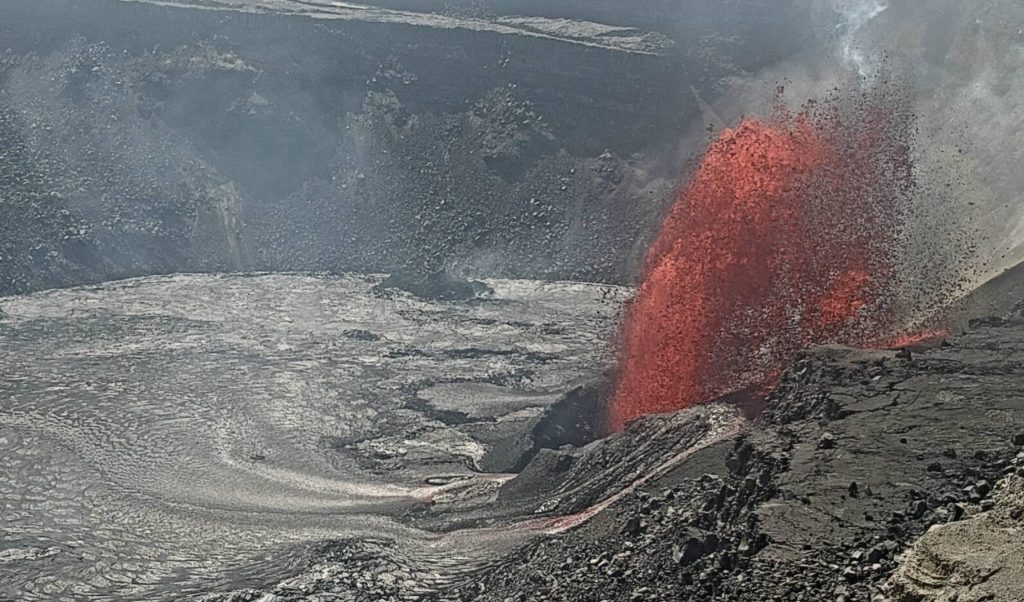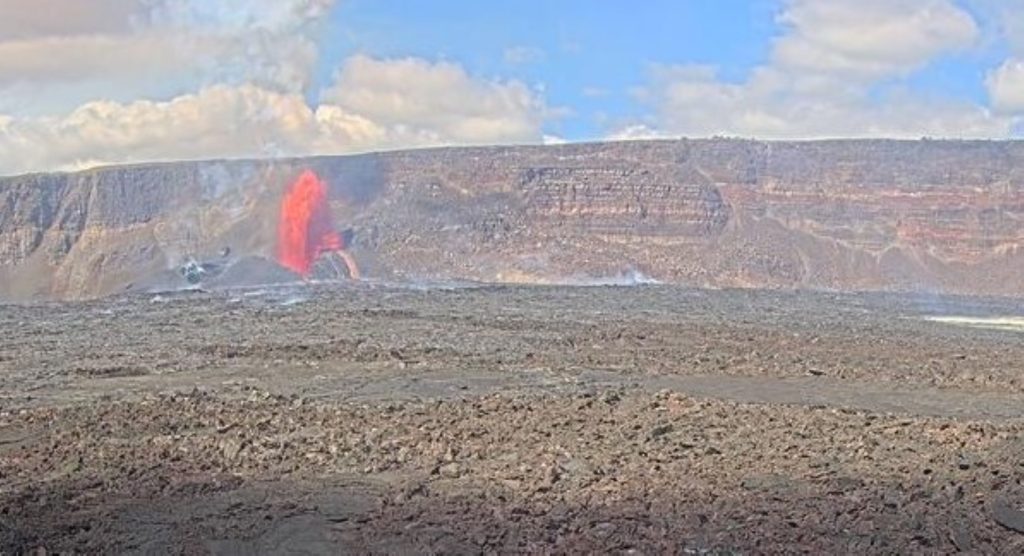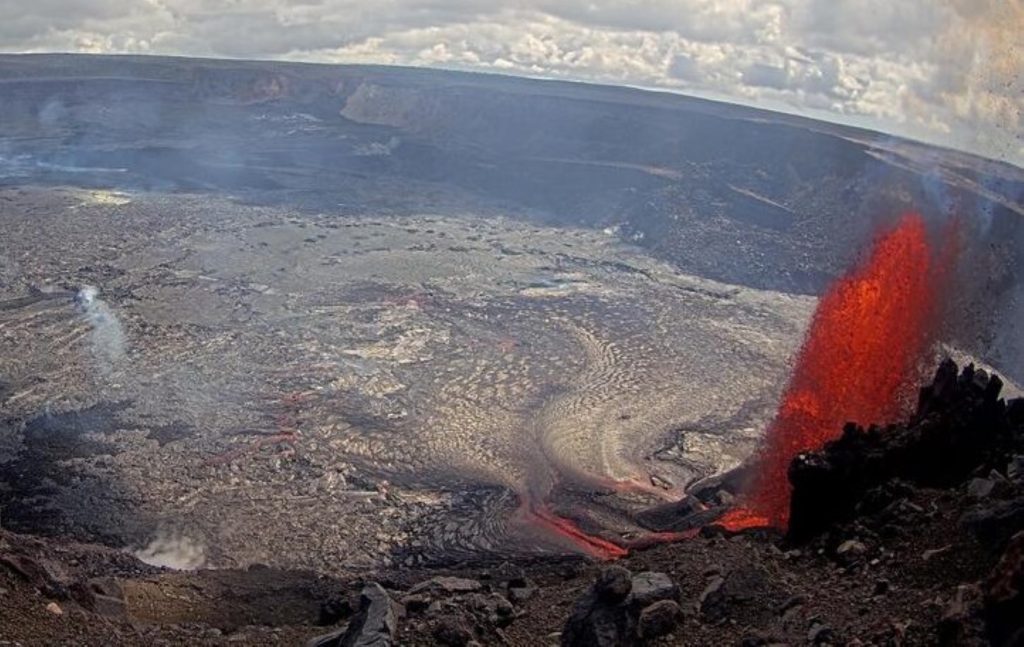Lava fountains erupt to about 330 feet high as new episode of activity begins at Kīlauea

Episode 9 of the ongoing eruption in Halemaʻumaʻu Crater at the summit of Kīlauea volcano on the Big Island began at 10:16 a.m. Feb. 11, with lava fountains producing a lava flow onto the crater floor.
A look at the livestream of the summit showed vigorous fountaining continued at about 11:40 a.m. Tuesday.
Episode 9 was preceded by small, sporadic spatter fountains that began early the morning of Feb. 10 and increased in intensity overnight.
Fountains from the north vent on the southwest side of Kaluapele, the volcano’s summit caldera, were estimated at 10:45 a.m. today to be roughly 330 feet high, with lava covering about a quarter of the Halemaʻumaʻu Crater floor.
Slow effusion of lava from the south vent began at about 10:50 a.m.
Inflationary tilt at the summit recovered about 9 microradians since Episode 8 ended just before 7:30 p.m. Feb. 4. Seismic tremor began increasing and tilt at the summit switched from inflation to deflation at about 10:25 a.m. today.
Each episode of Halemaʻumaʻu lava fountaining since the eruption began Dec. 23, 2024, has continued for between 13 hours and 8 days. Episodes have been separated by pauses lasting from less than 24 hours to 12 days.
No changes have been detected in the volcano’s East Rift Zone or Southwest Rift Zone.
Kīlauea’s volcano alert level remains at watch and its aviation color code is still at orange. All activity is within Hawaiʻi Volcanoes National Park.
High levels of volcanic gas — primarily water vapor, carbon dioxide and especially sulfur dioxide — are the primary hazard of concern with this eruption, as it can have far-reaching effects downwind.
As sulfur dioxide is continuously released during the eruption, it will react in the atmosphere to create the visible haze known as vog, or volcanic smog, downwind from Kīlauea.
Additional hazards include Pele’s hair — strands of volcanic glass produced by fountaining lava activity — and other volcanic fragments from lava fountains that can fall on the ground downwind of the eruptive vents.
Hawaiian Volcano Observatory continues to closely monitor Kīlauea.
Unless there are significant changes to the eruption, the observatory will issue an update the morning of Feb. 12.
Sponsored Content
Comments














